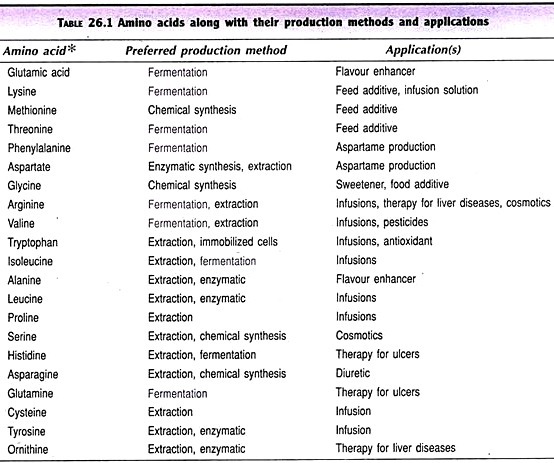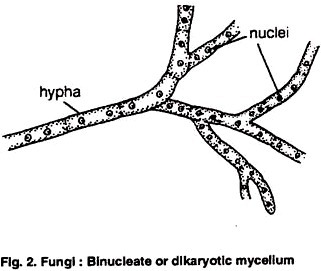ADVERTISEMENTS:
This article provides an overview on activation of T Cells and its dimension.
Receptor for Antigenic Peptide and Other Important Cell Surface Molecules on T Cell:
Activation of T cell is initiated by interaction of antigenic peptide with T cell receptor (TCR). On entry, a pathogen or an antigen is usually phagocytosed by macrophage or dendritic cells.
And a small fraction of the antigen, comprising 9 to 11 amino acids, is presented on top of the MHC (major histocompatibility locus) molecules expressed on cell membrane of macrophages and dendritic cells.
ADVERTISEMENTS:
An antigenic peptide on the MHC molecule finds a good fit with the antigenic receptor of a particular T cell. Usually one or a few T cells in total population of 109 lymphocytes in a person can bind properly to a particular antigenic peptide on MHC molecules of macrophages or dendritic cells. Sometimes the MHC molecules on B cell plasma membrane can also present the processed antigenic peptide to T cells, but they are more known as antibody producing and antibody secreting cells.
Antigen receptor on T cells was initially thought to be only two polypeptide chains bound by disulfide bonds. These two polypeptide chains bear similarity to the light chain of antibody (Ab.) molecule, each having a constant region proximal to the membrane and a variable portion at distal.
The clue—why do only one or a few T cells find proper fit to a particular antigenic peptide—lies in the amino acid composition of the variable region of the T cell recptor (TCR). The composition of the amino acids in the variable region differs in the TCR from cell to cell and a particular amino acid composition can find proper fit with amino acids of a particular antigenic peptide.
The mechanism of achieving variation in lymphocyte receptors is accomplished through special type of somatic recombination of genie segments determining TCR or Ab molecule during development of the cells. This somatic recombination is unique for the lymphocytes and can cause up to 109 or more variations for the variable region of the receptors and antibody molecules (Chakravarty, 1996).
ADVERTISEMENTS:
There are six other polypeptide chains by the side of the two polypeptide chains just described on the T cells. The major part of the six polypeptide chains are extended in the cytoplasm. The six chains together comprise the CD3 complex (cluster differentiation molecule) and the complex is responsible for transmission of the message that a specific antigenic peptide has bound to the specific variable site of the two polypeptide chains of the TCR.
Thus, the T cell receptor polypeptide along with CD3 complex completes the function of recognition of antigen and transduction of the message to the interior of the cell. Often the α and β chain with variable and constant regions and six chains of CD3 complex are described as total entity of TCR (Fig. 19.1):
The binding of antigenic peptide to TCR and transduction of the message is the activation of T cells. Although initiated in mid-seventies, the transduction of the message was described as a mechanical function through micro-fibrils, it was proved later to be biochemical cascade phenomenon. Only a short version of the phenomenon can be presented in such a limited length article. Before going into that a point needs to be mentioned here.
Besides interaction of TCRs with an antigenic peptides on MHC molecules, binding of a variety of accessory molecules on T cells with corresponding ligand molecules on antigen presenting cells (APCs) is a must for T cell activation. CD4, CD8, CD28 molecules on T cells are the most important accessory molecules for the purpose.
These molecules can bind to the corresponding ligands on any of the APCs, but they come into action only after TCRs establish a firm binding for a particular antigenic peptides on APCs. Another important T cell surface molecule CD45 is responsible for initial triggering of enzymes for activation of the cell.
Two major varieties of T cells are distinguished on the basis of CD4 and CD8 molecules. T cells of helper variety (TH) bear CD4 molecules and their TCR can recognize the antigenic peptide when it is associated with MHC class II molecule on APCs. Whereas, cytotoxic T cells (TC) bear CD8 molecules and their TCR can recognize the antigenic peptide when it is associated with MHC class I molecule on APCs. CD4 and CD8 molecules bind to the corresponding MHC class II and class I molecules on APCs, respectively.
After activation, helper T cells bearing CD4 marker provide various cytokines for proliferation and differentiation of other T cells, especially cytotoxic ones and B cells for antibody synthesis. Cytotoxic T cells bearing CD8 molecules specifically bind to the antigenic target cells with their TCR and mount cytotoxic reactions to the target cells. Thus, T cell activation is the central event in generation of both humoral (antibody) and cell mediated immune response.
T Cell Activation: Signal Transduction to Genes:
T cell activation means how the message of binding of antigen to specific TCR on cell membrane is conveyed to the nucleus to activate genes for cell division and then production of specific substances for helper or cytotoxic function. The cell activation includes several events of biochemical cascade reactions as already mentioned.
The activation is initiated by interaction of the TCR and associated CD3 complex. Each of the six polypeptide chains of CD3 complex has one or more of an amino acid sequence motif, called the immunoreceptor tyrosine activation motif (ITAM) in its cytoplasmic tail (Fig. 19.2). The epsilon (ε) and zeta (ζ) chains in CD3 complex are associated with two protein tyrosine kinases (PTKs) such as fyn and ZAP-70.
Another PTK, Ick, is associated with the cytoplasmic domain of CD4 and CD8. When several TCRs are engaged by antigenic peptides coupled to MHC molecules on APCs, the PTKs— Ick and fyn—get activated by phosphate group transfer from CD45 molecules bound on cell membrane.
In turn, Ick and fyn transfer phosphate group to the tyrosines in the ITAMs. ZAP-70 now associates with ITAMs and gets phosphorylated and activated. Addition of phosphate group indicates activation of PTKs (Ick, fyn, ZAP-70) and ITAMs which, in turn, causes phosphorylation of other enzymes in downstream pathway of activation (Fig. 19.3).
It appears that signal transduction is accomplished by a series of protein- phosphorylation events catalyzed by protein kinases and dephosphorylation events catalyzed by protein phosphatases (Abbas et al. 1998; Kuby, 1997; Paul, 1999).
One of the enzymes that first phosphorylates in downstream by activated ITAMs is phospholipase C (PLCγl). Activated PLCγl hydrolyze phosphatidylinositol, 4,5- biphosphate (PIP2), a cell membrane phospholipid, into two important products, inositol 1,4,5- triphosphate (IP3) and diacylglycerol (DAG).
These two chemicals are known as second (signaling) messenger. IP3 triggers an increase in intracellular Ca2+ and the subsequent activation of a calmodulin-dependent phosphatase called calcineurin, in one pathway. Calcineurin dephosphorylates the inactive cytosolic form of the T cell specific nuclear factor NF-AT (nuclear factor of activated T cells).
ADVERTISEMENTS:
In the other pathway, DAG activates protein kinase C (PKC), which then phosphorylates various cellular substrates and ultimately release of the nuclear factor NF-kB. Both the activated nuclear factors enter the nucleus where they bind to the enhancer region of various genes and activate them for transcription, including the IL-2 gene (for production of helper cytokine factor).
ADVERTISEMENTS:
A third signaling pathway is generated by the interaction of CD28 and B7 molecules, respectively, on T cells and APCs. This pathway works together with the TCR- mediated signaling pathways to activate a protein kinase called Jun N- terminal kinase (JNK) that is involved in the phosphorylation of the nuclear factor c-June.
Dimension of T Cell Activation:
The study of activation of T cell not only unravels the process of activation of a particular cell type, it also provides the handle to trigger one of the most vital immune-competent cells for diverse functions or to control unnecessary activation of the cell type for saving an individual from clinical complications, such as delayed type hypersensitivity. Furthermore, the process of activation of T cell provides a model for understanding the stimulation of other cell types.
Nedrud et al. (1975) and Chakravarty and Clark (1977) showed that after activation, at least one round of cell division is needed for differentiation of virgin T cells for cytotoxic function, whereas the cell division is not mandatory for memory cells to become cytotoxic. Cell division following activation possibly has much to do with a group of progeny cells to become memory cells.
On the basis of these works, Chakravarty (1980) tried to build a model of nucleo-histone packing in virgin and memory T cells. In experimental situation, the susceptibility of chromatin from virgin and memory T cells to the Dnase I was found to be different (Chakraborty and Jha, 1997).
ADVERTISEMENTS:
The criteria of different time period for activation, requirement of one cycle of DNA replication and susceptibility to Dnase I have been successfully used to judge the status of tumor infiltrating lymphocytes (TILs) as virgin or memory cells (Das and Chakravarty, 1997).
Polyclonally activated T lymphocytes can restrict the growth of tumor explant in corneal pocket and as well tumor induced neo-vascularization at the site (Chakravarty and Maitra, 1990). The cells are also capable of inhibiting the growth of malignant tumor in situ (Chakravarty and Maitra, 1990).
On adoptive transfer, polyclonally activated syngeneic lymphocytes can inhibit the recurrence of tumors after surgical removal from mice (Chakravarty and Jha, 1997). The cells were found to be cytotoxic to the tumor cells in 51Cr release assay. We proposed that activated T cells act as micro-surgeons to remove the ‘last’ malignant cells after surgical removal of main tumor load.
Currently the author and his coworkers are engaged in finding some immunostimulatory and immunomodulatory factors from plants, which would be effective in activation of T cells to be functional against malignant tumors. Several years back the author initiated the study in this line with ethanolic extract of turmeric and tried to find some equipment support from another institute.
In course of discussions others got interested and proceeded with works and the author left with the credit of publishing a paper to describe curcumin from turmeric with dual role, stimulatory for lymphocytes and apoptotic for murine fibrosarcoma cells (Chakravarty et al. 2003).
Besides hints for all these works in the laboratory of the author, works for the Nobel Prize in 2000 were illustrated in course of the oral presentation at Visva-Bharati. I feel tempted to include that at the end to show certain similarity of it with T cell activation.
Works for the Nobel Prize of 2000 and Certain Similarity with T Cell Activation:
ADVERTISEMENTS:
Arvid CarlsCen Bio-18(263-274)06/Final/30.11.06 286son (Dept. of Pharmacology, Goteburg University, Sweden), Paul Greengard (Laboratory of Molecular and Cellular Science, Rockfeller University, New York) and Eric Kandel (Centre for Neurobiology and Behaviour, Columbia University, New York) were jointly awarded the Nobel Prize in Physiology and Medicine for 2000 for their discoveries concerning “signal transduction in the nervous system”. This work bears much similarities with T cell activation process.
Dopamine released from the end of an axon binds to its receptor on next cell at neural synapse and causes release of cAMP which in turn acts as a second messenger to activate protein kinase A. This enzyme then phosphorylates other enzymes to be active, very much in the same way as discussed in case of T cell activation. Phosphorylated end proteins ultimately make ion channels in the membrane as gateways for ions to be transported at synapse.
Different types of proteins, after phosphorylation, may form slightly different ion channels which may cause differential excitations. Dopamine, nonadrenalin and serotonin mediated transmission is known as slow synaptic transmission and, in turn, they also control fast transmission at synaptic junction.
Interestingly, short term stimuli generate a short time memory for minutes to a few hours. Stimuli for long term cause long term memory. Signal transduction for long term memory involves message to reach nucleus and synthesis of new protein molecules.



